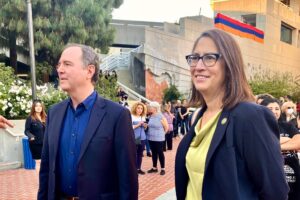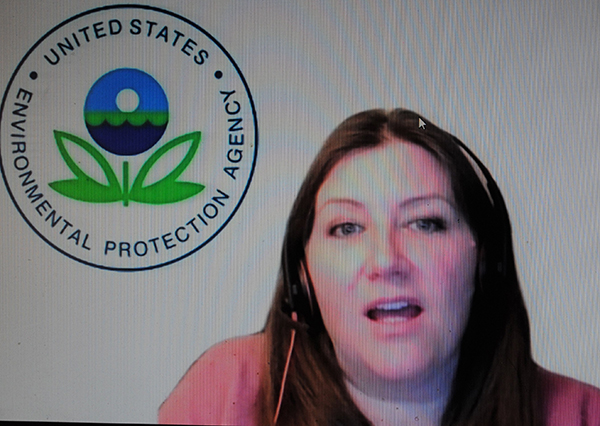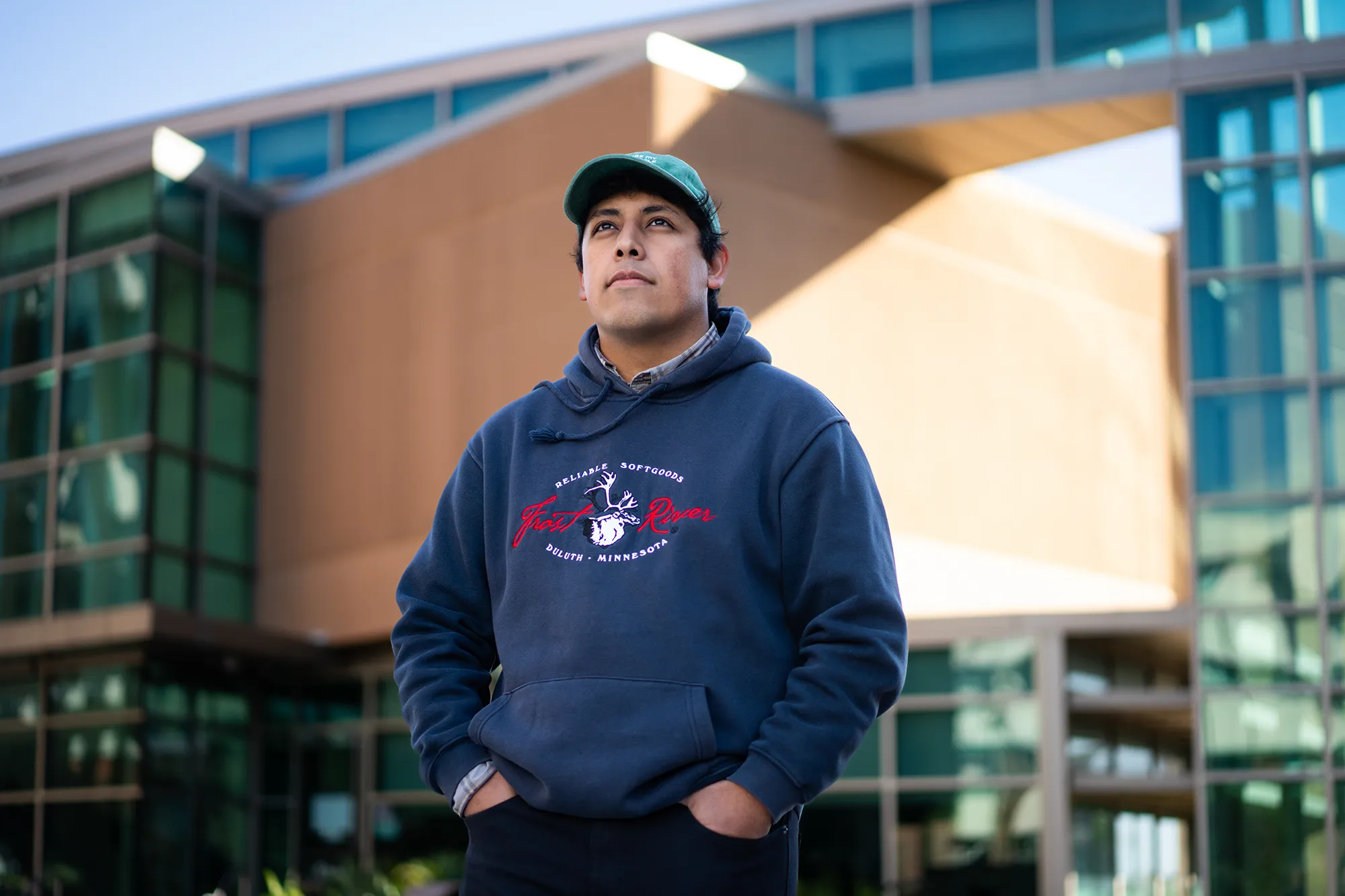By Alfredo Santana
Contributing Writer
VERNON — The trustee appointed to oversee the cleanup at the former Exide’s battery recycling plant and a representative from the federal Environmental Protection Agency have revealed that the site’s ancillary buildings would not be decontaminated unless more funds are raised or allocated for the project.
Amanda Cruz, an EPA physical scientist assigned to supervise the Vernon Environmental Response Trust (VERT), announced that secondary facilities used as warehouses and for storage would be boarded up if the trust runs out of the $11.16 million allocated as part of a bankruptcy settlement with Exide Technologies last October.
She and trustee Roberto Puga said that $7.2 million have been spent cleaning the smelter’s first two of three giant facilities called segments, where the batteries’ teardown occurred, and would start full decontamination of segment 3 in the following months.
The EPA official said the trust needs $7 million more to decontaminate between four and five smaller buildings used for secondary operations, and current plans call for boarding them up to prevent the release of micro particles of lead, arsenic, mercury or other hazardous pollutants.
“The money is not there, so they would be left as they are,” Cruz said.
Exide Technologies completed cleaning half of segment 1 before VERT took control of maintenance and operations. Segment 1 was torn down in its entirety, and large areas of bare soil now cover the new surface.
“We have made tremendous progress in decontaminating and deconstructing the project,” Cruz said. “With the [current] amount of money, we will be able to continue deconstruction of segment 2” and move fully to segment 3,
Cruz said the trust fund falls short of the $5.2 million estimated to pay for underground water cleanup to restore the area around the plant, which began operations in 1922.
Puga said that decontamination and the process of dismembering segment 3 has begun, and nearly $1.3 million, or 18% of the current expenses, were assigned to its cleaning.
The trust invested nearly $2.9 million in the cleanup and dislodging of segment 2, the equivalent of 40% of the total expenditures, Puga added.
“One thing we are trying very hard is to put as many of our limited dollars to use doing cleanup,” Puga said. “We are keeping administrative and oversight costs to less than 5% of the total.”
At the first Zoom gathering conducted by the Exide’s Technologies Advisory Group, local residents accused officials from the state Department of Toxic Substances Control of lacking a plan to raise the money for remaining area cleanups.
Participants at the 2 ½ hour virtual meeting discussed cleaning work at the plant, and at properties blanketed with airborne toxic particles that cause cancer, asthma and other deadly diseases.
Area resident Jane Williams drilled Department of Toxic Substances Control Director Meredith Williams for not having enough money to clean up toxic metals from 10,000 homes, while she sought an allocation of $300 million in Gov. Gavin Newsom’s 2021-22 budget to decontaminate other projects.
“Why did you not request more money to clean this community,” Jane Williams asked.
Williams said her agency is pursing “different options to clean up” the polluted properties, but refused to elaborate on potential fiscal sources.
In January, the Department of Toxic Substances Control informed the public that $175.5 million of the $251.1 million allocated from public funds had been spent removing soil, ornaments and other surfaces from contaminated parcels built within 1.7 miles of the Exide plant.
Hortensia Muñiz, preliminary investigator with the Department of Toxic Substances Control, said 2,377 properties had been detoxified, with the goal to cover 3,200 homes by December 2021 with the remaining funds.
She said 1,556 additional parcels need soil tests.
Tom Steel, a legislative aide to Assemblyman Miguel Santiago, said state legislation seeks to provide $540 million to cover cleanup costs for 6,800 more homes if the bill is approved by the state Legislature and signed by Gov. Gavin Newsom.
The Assembly’s Committee on Environmental Safety and Toxic Materials will hold hearings on AB 1024 in April. The bill was introduced last month.
Steel said Santiago and area legislators want to clamp down on impending cleaning contracts, “so there won’t be cost overruns and delays on cleanups as we had in the past.”
“We have tried to outreach the community” to make them aware of these issues, Steel said.
The Department of Toxic Substances Control identified 473 homes in Bell, 915 in Commerce, 1,143 in Huntington Park, 1,865 in Boyle Heights, 2,688 in Maywood and 3,076 in unincorporated East Los Angeles with potential hazardous particles spewed by the battery smelter in 93 years of operation.
Another fiscal source to pay for decontaminations could emerge from the $1.9 trillion American Rescue Plan, signed by President Joe Biden on March 11, with a cash windfall for California of $42 billion to be divided among state, county and local governments.
In addition, California sued former plant owners and operators in December to recoup $136.5 million plus legal costs in U.S. District Court, and requested the creation of a Superfund site.
The affected communities are largely inhabited by Latinos with blue collar jobs in essential industries.
Over the years, frustrated residents and activists have accused Exide and previous plant operators of environmental racism for dumping toxic metals while they operated with temporary permits issued by state agencies before the smelter shuttered in 2015.
Mark Lopez from the East Yard Communities for Environmental Justice expressed concern that the trust fund and the state’s toxic control agency may run out of money and leave the community hooked with unfinished cleanup and a severely hazardous facility as the oversight agencies seek potential new owners for the site.
“If there is not enough money to clean up, why are potential buyers being considered?” Lopez asked.
He said the issue reminded him of the promise Exide executives made to state prosecutors in 2015 to fork out more than $50 million to clean the mess with the condition of dropping criminal charges. Ultimately, a federal bankruptcy judge’s ruling in Delaware cleared the company of most liabilities with the exception of the VERT trust.
“The excuse was to allow Exide to operate while [the state] negotiated to clean and close the place,” Lopez said. “I am concerned with the direction and the future of the trust.”
“Exide got a card out of jail,” Lopez added.
Jason Aspell, assistant deputy officer of engineering and permitting with the South Coast Air Quality Management District, said his agency has investigated two violations of high levels of arsenic released into the air during the Exide tenure, but none has been logged after VERT took over.
The agency caps arsenic emissions at 100 milligrams per cubic meter in a 24-hour period.
Other participants requested funding to remove lead from parkways, and pushed stakeholders to address the issue as part of the discussions.











